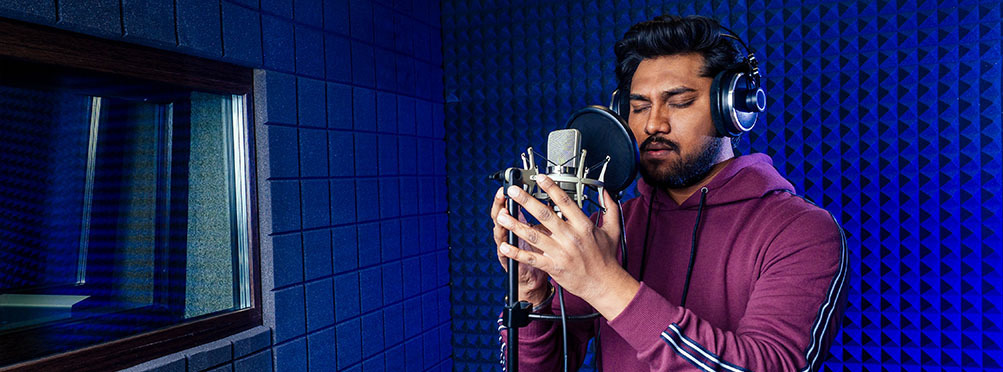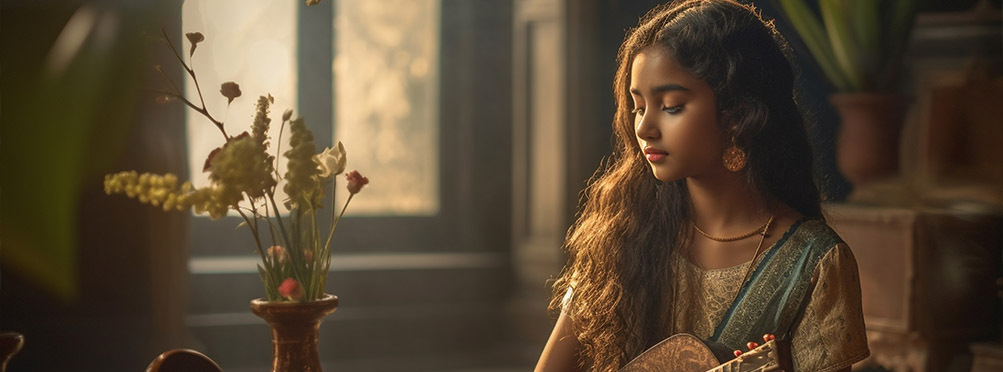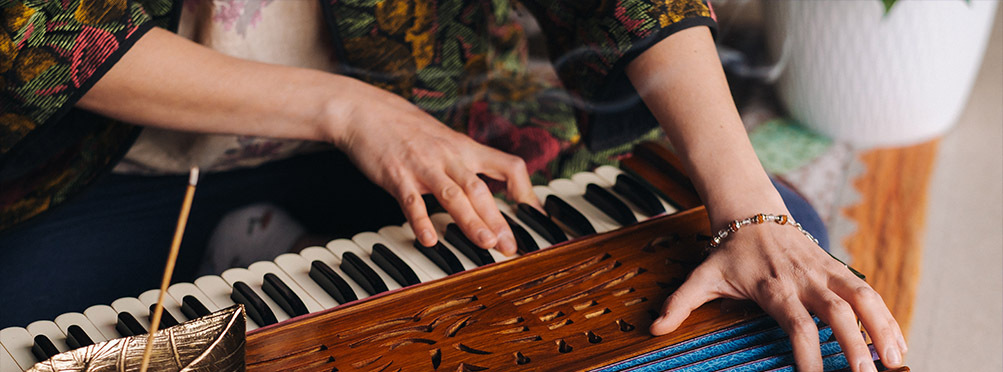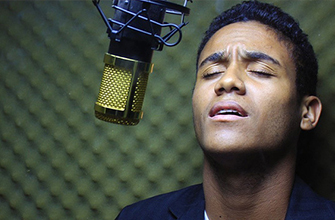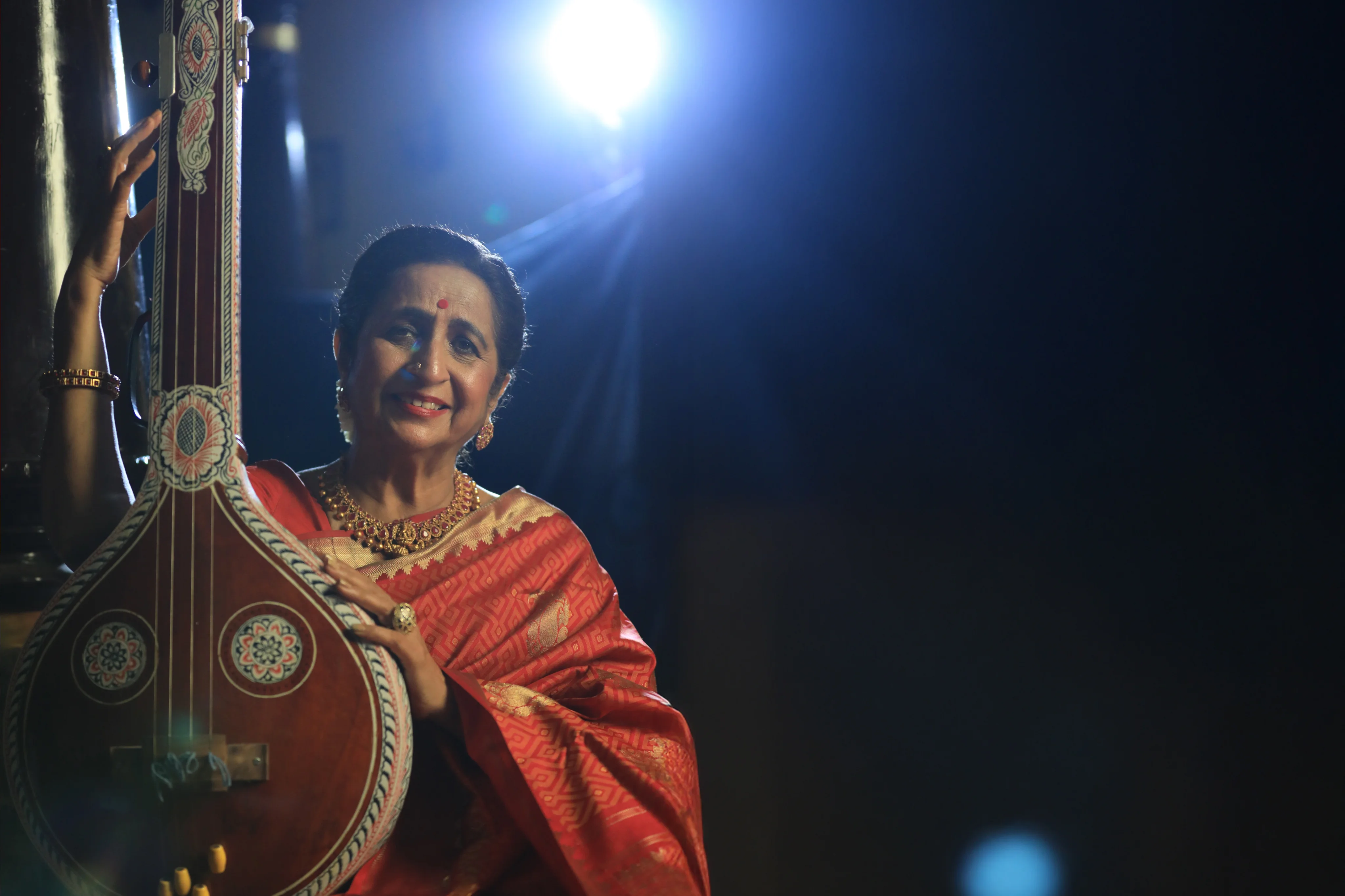Introduction
Indian classical music is renowned for its ability to explore distinct melodies and emotions from different ragas. ‘Hindustani Music’ and ‘Carnatic Music’ are the two main branches of Indian classical music. Carnatic music has been celebrated for centuries in India and is an integral part of our rich cultural heritage. If you are curious to know more about Carnatic music as a beginner, this guide will help you to understand its origin, technical aspects, and other nuances.
If you’re really excited to begin your journey in Carnatic music, start with a free trial lesson today!
What is Carnatic Music?
Derived from the Sanskrit term ‘Karnataka Sangitam’, Carnatic music is known for its intricate rhythm and complex melodies. Among the most respected and oldest musical traditions in the world, it has been passed down from generation to generation in India and has its roots in the ancient Hindu scriptures.
A principal performer, a melodic accompaniment playing the violin, a mridangam for rhythmic backing, and a person on tambura together comprise a group who performs Carnatic music. Ghatam, kanjira, morsing, venu flute, veena, and Chitra veena are other instruments used in the performance. This classical form of music emphasises improvisation carried out using a structured framework on musical scales, rhythms and compositions.
One of the key features of Carnatic singing is the use of gamakas (microtones). The inclusion of these subtle embellishments to the musical notes creates a rich and soulful sonic experience. Also, the use of rhythmic circles or talas in Carnatic music adds more depth and complexity to the genre. It is gently a treasure trove of beauty and emotions.
Origins of Carnatic Music
The ancient Vedic texts like Sama Veda, Rig Veda and Yajur Veda have laid the foundation of Indian classical music. Carnatic music originated in the southern part of India and was primarily performed in Hindu temples. Gradually, it evolved from being performed during religious ceremonies into an art form. Therefore, it has a strong association with spirituality and religion, as its various compositions are in devotion to Hindu gods and goddesses.
During the reign of the Vijayanagara Empire, Carnatic music bloomed significantly. This was the time when Saint Purandara Dasa, regarded as the ‘Father of Carnatic Music’, developed the basic lessons of this genre. Along with him, Tyagaraja, Syama Sastri and Muttusvami Dikshitar, the trinity of Carnatic music, played a key role in the development of ragas, tala and the language used to convey feelings.
Essential Concepts of Carnatic Music
Raga, Tala and Bhava are some of the essential concepts of Carnatic Music.
- Raga
Raga is the heart of Carnatic music as it is the melodic framework that serves as the basis of musical composition and improvisation. It is generally based on Saptak, a scale consisting of seven notes. These specific notes are arranged in ascending (arohanam) and descending (avarohanam) order, signifying the phrases that are unique to each raga. The notes in raga follow a strict set of rules and guidelines passed through oral tradition.
There are several ragas in Carnatic music, such as Sampurana Ragas, Vakra Ragas, Melakarta Ragas, Janya Ragas, and many more. Each raga has its unique set of notes and all of them evoke a distinct emotion. They are an essential element of Carnatic music as they create the ambience and feel of a musical composition. The magic of Carnatic music resides in the way performers weave together different ragas and stimulate an engaging musical experience.
- Tala
Tala is the rhythmic part of Carnatic music. It is an ancient musical concept derived from Vedic texts of Hinduism like Samaveda. This method was used for singing hymns. It refers to the rhythmic pattern or time cycle, which provides structure to the music and allows musicians to improvise and express their creativity. Each tala has a set number of beats, and the duration of every beat is fixed. They consist of a series of beats and measures organised into rhythmic units called avartanas.
Tala has three level structures composed of Matra (the smallest rhythmic sub-unit), Vibhag (describes the duration of rhythmic pattern), and Avartan (the full cycle of tala). Some of the most common tala in Carnatic music are Adi tala, Rupak Tala and Ata Talam. It is typically performed by the percussion instruments such as the mridangam, ghatam, and kanjira. These instruments bring a vibrant rhythmic layer to the melodic elements as it creates a sense of movement and energy that drives the music forward. It requires a high level of skills and years of practice to execute tala with perfection.
- Bhava
Bhava infuses life into Carnatic music as it conveys the emotional aspect of it. In simple words, Bhava can be translated into ‘feeling’ or ‘expression’ and is a critical component of this genre. It refers to the ability of the performer to express a range of emotions, from joy and devotion to pathos and longing, through their rendition. This possessive power truly builds a connection between the performer and the audience.
Bhava can be communicated by the performer using a combination of vocal techniques, such as voice modulation, expression, and phrasing, as well as the interpretation of the lyrics. Using these techniques, a performer can evoke the appropriate emotion for each composition and make the audience resonate with their performance. The emotional essence of the Bhava makes Carnatic music so powerful and captivating.
Conclusion
Carnatic music is a discipline which requires years of practice to master the finer details. One needs to be persistent to develop a stronger understanding of the rules and absorb them in their craft to finesse. This can be a long journey, but with the right guidance and platform, you can sail through all the difficulties and nourish your life with the presence of soulful Carnatic music.
Artium Academy can help in your journey. For all those of you wondering how to learn singing online, we offer online classes for music and guide everyone to fulfil their musical dreams. Our Carnatic Music Course is designed by Aruna Sairam, a legendary Carnatic music singer and a recipient of the Padma Shri award from the Government of India. The course is divided into three levels – Preparatory, Intermediate and Advanced to carve the right path and ensure better comprehension of different concepts. By connecting with us, you will take your first step towards learning Carnatic music!
Learn Carnatic Music today with a FREE 1:1 Music Learning Session at Artium Academy.
“Do you have a question related to Carnatic music? Just ask! The Artium Academy Carnatic Music Learning Companion is here to guide you—explore ragas, master talas, and improve your Carnatic music learning journey instantly!“

